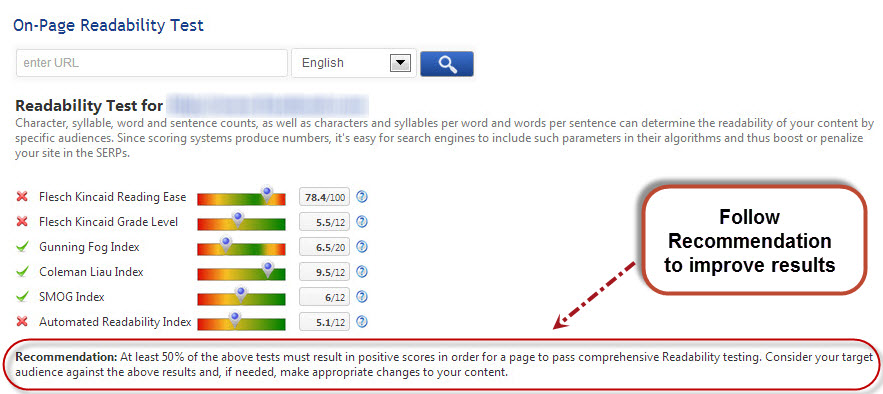On-Page Audit: Readability Test
Character, syllable, word and sentence counts, as well as characters and syllables per word and words per sentence can determine the readability of your content by specific audiences. Since scoring systems produce numbers, it's easy for search engines to include such parameters in their algorithms and thus boost or penalize your site in the SERPs.
Rank Ranger's unique On-Page Readability Test analyzes page content using 6 respected tests, and offers support for many languages.
Navigate to
Reports & Tools > Organic Search > SEO Audit and select On-Page Readability Test.
Simply enter the page URL, select the page Language and click the button.

Analyzing the Results

At least 50% of the tests must result in positive scores in order for a page to pass comprehensive Readability testing. Consider your target audience against the results and, if needed, make appropriate changes to your content.
Test Parameters:
Flesch-Kincaid Reading Ease:
Measures comprehension difficulty when reading a passage of contemporary academic English. Lower scores indicate material appropriate for university graduates, while higher scores indicate content could be easily understood by younger students.
Flesch-Kincaid Grade Level:
Measures reading comprehension difficulty based on US and UK student grade level.
Gunning Fog Index:
Estimates the years of formal education required to understand the page content based on words per sentence and complexity of words.
Coleman-Liau Index:
Relies on characters per word instead of syllables per word and estimates the US grade level required to comprehend the page content.
SMOG Index:
Originally created to measure the reading difficulty level of medical-related content, the Simple Measure of Gobbledygook (SMOG) estimates the years of education required to comprehend content exceeding 30 sentences.
Automated Readability Index:
Relies on characters per word instead of syllables per word and estimates the US grade level required to comprehend the page content.


